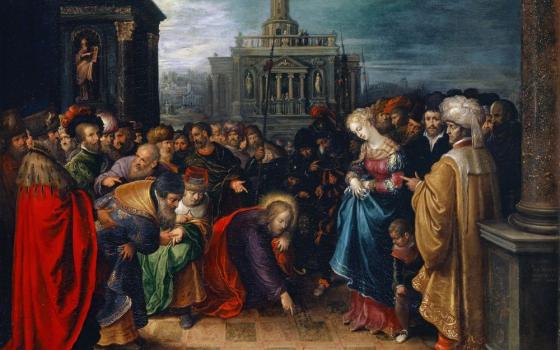Perspective
We’re back in Ireland at Róisín’s kitchen table (NCR, Oct. 14), though I’m really back in Maryland pondering my notes. In Dublin, tea and sandwiches are still a half hour away.
What was my takeaway from my recent trip to Ireland?
There are seven parishioners and their priest; Róisín’s husband is in the front room organizing his Boy Scout meeting. There are two married couples. There are Ann and Pat -- parents of three, she runs the parish children’s group; he is on the parish council and is a parish child protection officer. Ann, who keenly adheres to the words of Our Lady of Medjugorje, has said “the future of the church rests in adoration, adoration, adoration; for priests, preach, preach, preach the good news.” Pat has said, “Focus on Christ.”
There are Niall and Theresa. They have three young children. He is also on the parish council and is a parish child protection officer; Theresa is active in parish programs. Niall has said, “The future of the church is with the laypeople; it has to be.”
Clare, mother of three adult children, is a schoolteacher of 9- and 10-year-olds. She felt the cardinal and bishops have let the people down. Donal is a 21-year-old music teacher whose peers have pretty much abandoned Catholicism and Christianity.
Their pastor, ordained for 40 years, has said, “Through this [sexual abuse] crisis we’ve grown. I find I can get closer to people now. I can talk with them about things I couldn’t talk about before.”
The host, Róisín, who also speaks to “adoration,” feels there’s a sound argument for married priests and women priests.
That’s much of the Irish mix so I played it against the larger backdrop.
The church of the West is in rapid decline, and what remains is in a mess. The church in Rome (papacy, Vatican and senior Western hierarchy) is in disrepute. At home, not counting the American Latino Catholic insurgency, there are closed churches, empty pews, fewer and fewer priests, and a small cohort of younger Catholics. These Western youngsters, where possible as far as the church in Rome is concerned, are to be schooled -- catechetically speaking -- in a 500-year-old (rather than a 2,000-year-old) version of Christianity. The institution is betting on the old pyramid (pope on top, laity on the bottom) with the church in Rome commanding a laity armed with books filled with marching orders.
For the church of the peoples of color (essentially Africa, South America and Asia), the church in Rome is looking to the old model: legions of Tridentine-schooled African lockstep priests and subservient women religious to carry things forward.
Sixty years ago -- that is, the 1950s and before Vatican II (1962-65) -- the church in Rome looked in dismay at a Western Europe democratized, secularized and “socialized” and turned its gaze and hopes to what Evelyn Waugh called “the American Catholic epoch.” But the democratic American Catholic proletariat was suddenly educated, ambitious and questioning.
The epoch of the peoples of color will be no different. It may not have a Vatican III to draw on anytime soon, but it has a global tsunami of democratic aspirations powered by instantaneous global communications that impact, enervate or embolden national and regional and ethnic and historical roots and social values.
The church in Rome is more or less powerless against that tsunami. It doesn’t preach -- it bemoans. Despite its pontifical academies and hundreds of Catholic colleges and universities, a church commanded to carry Ann’s “good news” to all nations hasn’t the ears to hear, nor the skill or the words to convince. It has shown itself unable to evangelize the educated, if disaffected, Westerner and equally the poor sleeping on the steps of its closed city churches. Nor, with its martial artifice, will it hold the church of the peoples of color to its satisfaction.
Things are not as placid in Africa as they look. The numbers of African priests in permanent, monogamous relationships with “wives” is a fact to rival the growing presence of the church’s gay clerical caste elsewhere.
A continuing problem for the church in Rome -- and it has more than one -- is that it hasn’t learned any lessons from the original Irish missionaries. St. Columba, educated at Clonard -- less than a two-hour drive north of Róisín’s kitchen table -- took his 12 monks to Scotland and from there changed the face of Western Europe. They grafted Christianity on to the best of the local culture.
In the 20th-century church of the West, the best of the local culture turned out to be democracy. And the church in Rome can’t handle that, because it threatens its internal, secretive, unaccountable, privileged, quasi-celibate, monarchical, top-down, power-driven old boys’ club.
The church in Rome has placed its bet on the Tridentine church and the cult of the papacy.
Because of Ireland I’m placing my bet on those around Catholic kitchen tables where sentiments can run from Medjugorje to women priests. Where people talk out parish community priorities, and the surrounding community’s needs. Where there’s two-way communication in a community of equals. Powered by the word and the Eucharist.
It worked 2,000 years ago.
Ah, now comes the sandwiches and tea.



